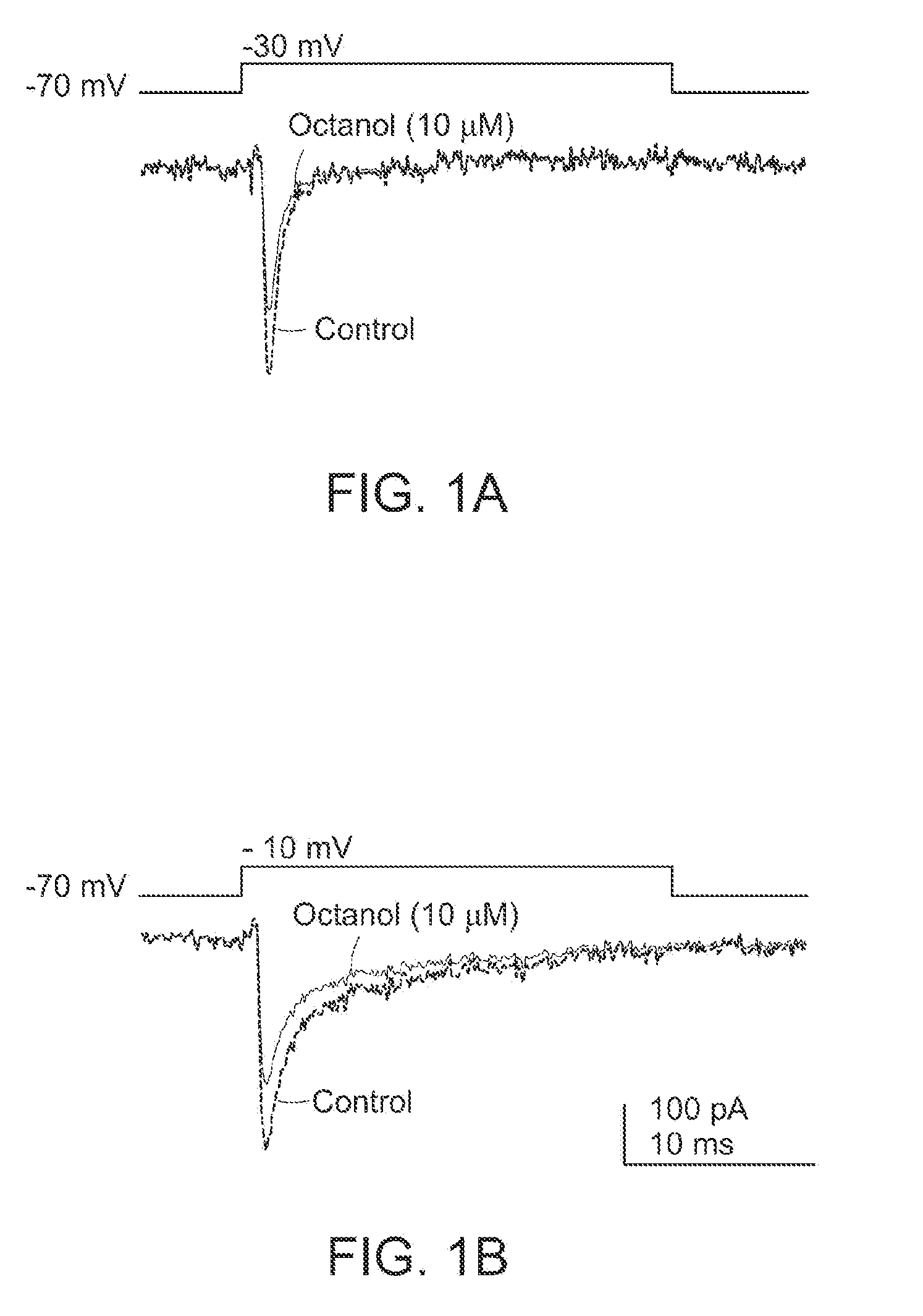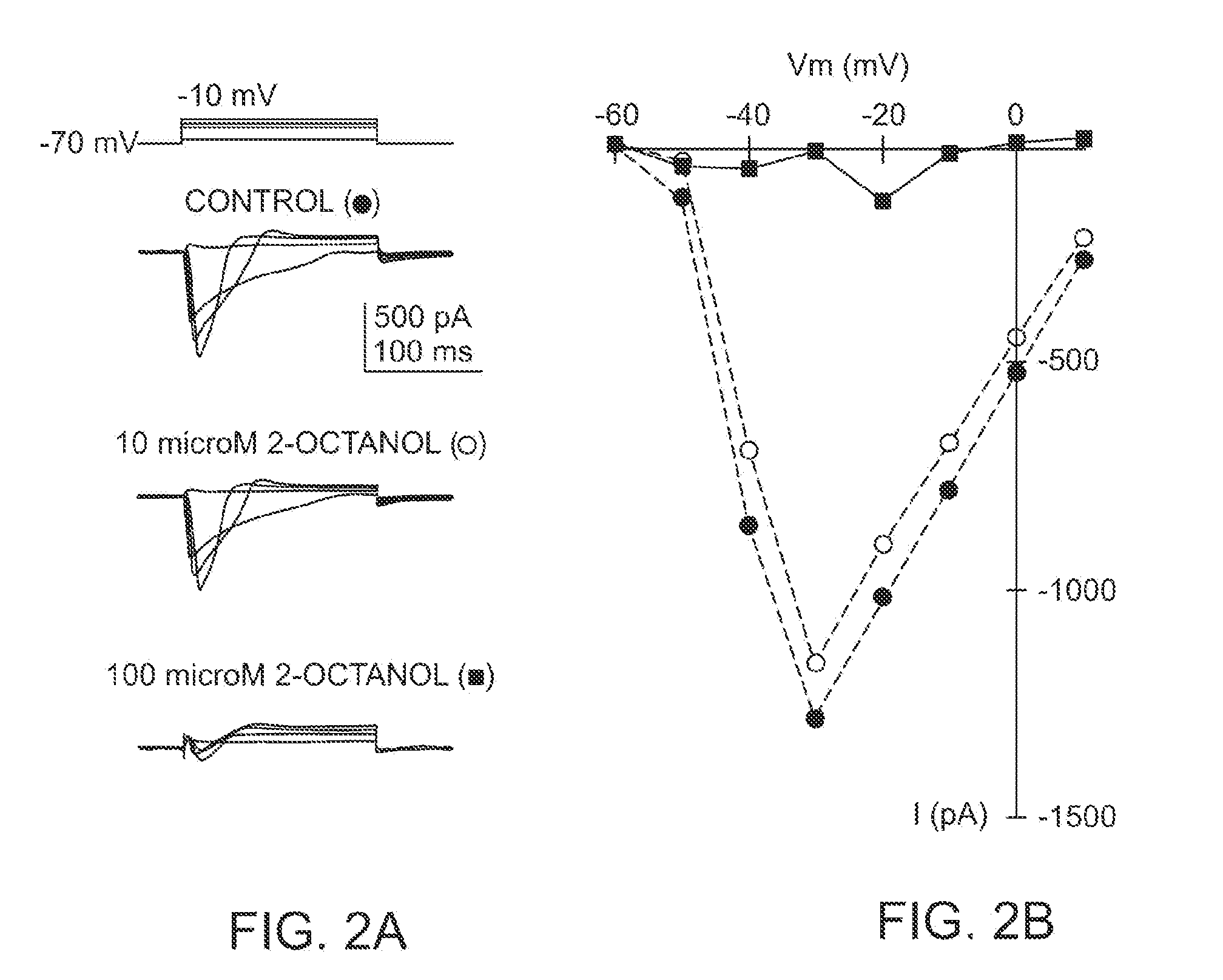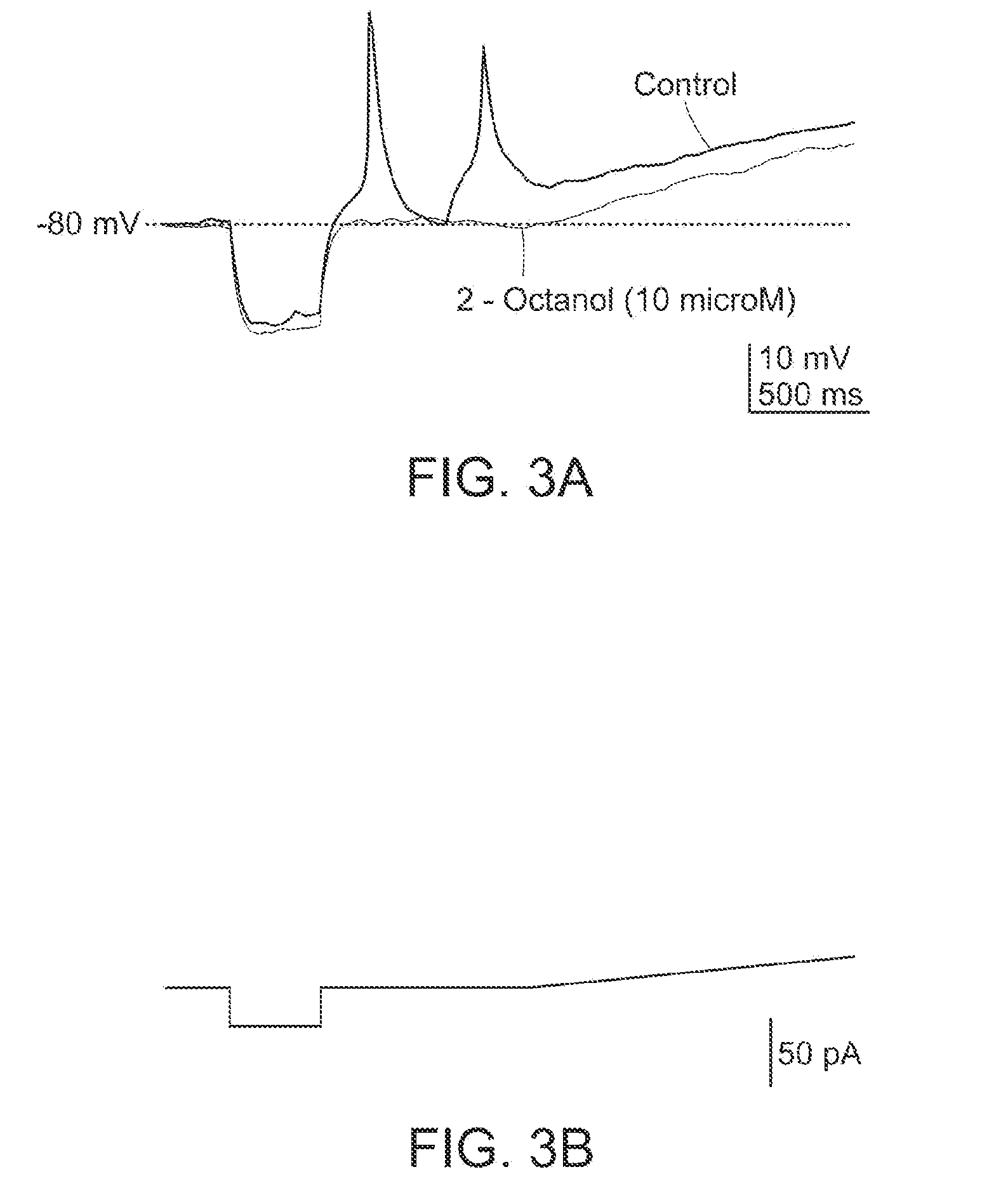Methods and Compositions for Treating Thalamocortical Dysrhythmia
a technology of thalamocortical dysrhythmia and composition, applied in the field of medical sciences generally and neurophysiology and neuropharmacology, can solve the problems of abnormal neuronal oscillation, uncoordinated electrical activity, and impair the motor and cognitive skills that are controlled by those regions of the cortex
- Summary
- Abstract
- Description
- Claims
- Application Information
AI Technical Summary
Problems solved by technology
Method used
Image
Examples
example 1
Preparation of Brain Slices Containing Ventrobasal Thalamic Nucleus
[0143]Long-Evans rats (two to four weeks old, 40-50 g; either sex; Taconic Farms) and Harley guinea pigs (four to eight weeks old, 50-300 g) were anesthetized with pentobarbital (Nembutal, 120 mg / Kg i.p.), decapitated and the bone and dura mater covering the cortical surface were carefully peeled away. The rostral part of the brain was glued onto microslicer stage of a vibroslicer (Leica Microsistemas, Bannockburn, Ill., USA) containing a low Na+ / high sucrose artificial cerebrospinal fluid (“ACSF”) solution (248 mM sucrose, 26 mM NaHCO3, 1.25 mM NaH2PO4, 5 mM KCl, 3 mM MgSO4, 0.5 mM CaCl2, 10 mM (+)-sodium-L-ascorbate, 3 mM sodium pyruvate and 10 mM glucose, aerated with 95% O2 / 5% CO2 to a final pH of 7.4). 180 μm to 240 μm transverse slices were obtained containing both thalamic and cortical areas. After cut, slices were allowed to recover in an incubation chamber at 37° C. for at least 30 min. containing continuous...
example 2
Whole-Cell Patch Recording Methods
[0144]Patch recordings were performed at 35° C. in a chamber constantly perfused with normal ACSF solution containing carbachol (50 μM-100 μM, a cholinergic agonist, both nicotinic and muscarinic), tetrodotoxin (100 nM-500 nM, a voltage-dependent sodium channel blocker) and an equivalent proportion of the vehicle Tween-80 used to dissolve octanol Winds et al. (1982) Nature 297:406-408.). Patch electrodes were made from borosilicate glass and had resistances of 3 to 8 MΩ when filled with either high potassium intracellular solution (130 mM KMeSO3, 10 mM NaCl, 10 mM HEPES, 1 mM EGTA, 4 mM Mg-ATP, 0.4 mM Na-GTP, 2 mM MgCl2, 10 mM sucrose and 10 mM phosphocreatine, pH 7.3, 290 mOsm); or either a high cesium / QX314 intracellular solution (120 mM CsMeSO3, 8 mM NaCl, 10 mM HEPES, 5 mM EGTA, 10 mM TEA-Cl (triethylamine chloride), 4 mM Mg-ATP, 0.5 mM GTP, 7 mM phosphocreatine, pH 7.3 (29 mOsm)). High potassium solution was used when octanol-dependent effects ...
example 3
A. Inhibition of Cav3 Plasmalemmal-Bound Calcium Channel with 1-Octanol
[0146]FIGS. 1A and 1B show the patch recording of individual thalamic neurons from the ventrobasal nucleus obtained from the rodents' brain slices prepared according to Example 1. The thalamic nucleus processes the somatosensory information from rodents' whiskers. The effect of 10 μM octanol on calcium channels at two different voltage levels was shown.
[0147]Using a holding level where only low voltage activated calcium currents can be open (−30 mV), octanol blocks peak fast activated Cav3.1 calcium current (ICa) amplitude by about 30% (FIG. 1A). When both low and high voltage activated calcium currents are open, octanol blocks the peak of the fast component (Cav3.1) leaving unchanged the slow component that remains open at the end of the depolarized pulse (−10 mV)(FIG. 1B). Therefore, 1-octanol is shown to specifically block low threshold activated Cav3-type currents from Ventrobasal thalamic neurons.
B. Inhibiti...
PUM
| Property | Measurement | Unit |
|---|---|---|
| frequency | aaaaa | aaaaa |
| membrane potential | aaaaa | aaaaa |
| frequency | aaaaa | aaaaa |
Abstract
Description
Claims
Application Information
 Login to View More
Login to View More - R&D
- Intellectual Property
- Life Sciences
- Materials
- Tech Scout
- Unparalleled Data Quality
- Higher Quality Content
- 60% Fewer Hallucinations
Browse by: Latest US Patents, China's latest patents, Technical Efficacy Thesaurus, Application Domain, Technology Topic, Popular Technical Reports.
© 2025 PatSnap. All rights reserved.Legal|Privacy policy|Modern Slavery Act Transparency Statement|Sitemap|About US| Contact US: help@patsnap.com



